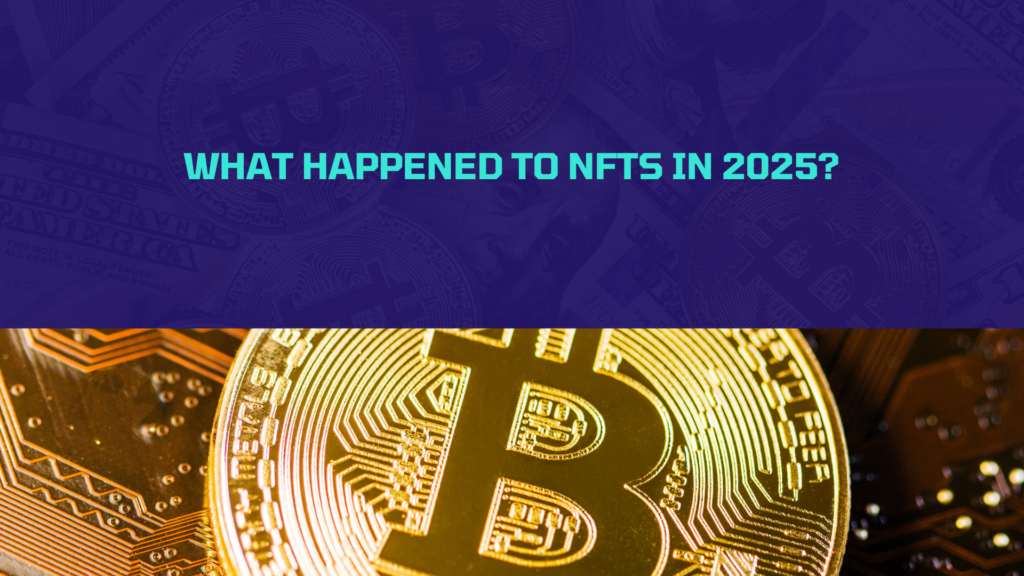What Happened to NFTs in 2025?
Non-Fungible Tokens (NFTs) took the world by storm in the early 2020s, with digital art, collectibles, and virtual assets selling for millions of dollars. Projects like the Bored Ape Yacht Club (BAYC) became household names, and celebrities like Justin Bieber and Stephen Curry flaunted their NFT purchases. But as we step into 2025, the NFT landscape has evolved significantly. The hype has cooled, and the focus has shifted from speculative trading to real-world utility. So, what happened to NFTs in 2025? Let’s dive in.
The Rise and Fall of NFT Hype
The Early Days of NFTs
NFTs burst onto the scene in 2021, with digital art and collectibles leading the charge. The Bored Ape Yacht Club, launched in April 2021, became a cultural phenomenon. Each of the 10,000 unique Bored Ape NFTs was algorithmically generated, featuring traits like fur color, clothing, and accessories. Initially sold for 0.08 ETH (around $190), these NFTs quickly skyrocketed in value, with some selling for millions of dollars.
Celebrities and influencers jumped on the bandwagon, using Bored Apes as profile pictures and status symbols. The project’s exclusivity and community-driven ethos made it a standout in the NFT space. However, the hype was not without controversy. Critics pointed to the environmental impact of blockchain transactions and the elitist culture surrounding high-priced NFTs.
The Cooling of the Market
By 2023, the NFT market began to cool. Trading volumes dropped, and many speculative investors exited the space. The floor price of Bored Ape NFTs, which peaked at over $400,000 in 2022, fell by 88% by mid-2023. This decline was part of a broader trend, as the NFT market shifted from speculative trading to projects with tangible utility.
The Evolution of NFTs in 2025
From Speculation to Utility
In 2025, NFTs are no longer just about digital art and collectibles. The focus has shifted to utility—how NFTs can be used in real-world applications. Projects that offer tangible benefits, such as access to exclusive events, rewards programs, or real-world services, are thriving.
For example, NFTs are now widely used in gaming. Players can own in-game assets like skins, weapons, and characters as NFTs, which they can trade or sell across different platforms. The play-to-earn model, where players earn real-world value through gameplay, has become mainstream.
NFTs in the Metaverse
The metaverse has become a key area for NFT adoption. Virtual real estate, avatars, and digital goods are tokenized as NFTs, allowing users to buy, sell, and trade them with transparency and security. Platforms like The Sandbox and Decentraland have created thriving virtual economies, where NFTs are integral to digital life.
Tokenization of Real-World Assets
One of the most significant developments in 2025 is the tokenization of real-world assets. NFTs are being used to represent ownership of physical assets like real estate, luxury goods, and even intellectual property. This democratizes access to high-value assets, allowing fractional ownership and greater liquidity.
The Bored Ape Yacht Club in 2025
A Cultural Icon
Despite the market downturn, the Bored Ape Yacht Club remains a cultural icon. The project has expanded its ecosystem with spin-offs like the Mutant Ape Yacht Club and Bored Ape Kennel Club, which have kept the community engaged.
New Utilities and Partnerships
BAYC has also embraced new utilities. In 2025, Bored Ape NFTs are used for more than just profile pictures. They grant access to exclusive events, virtual hangouts, and even real-world experiences like yacht parties and concerts. The project has also partnered with brands like Adidas and Universal Music Group to create unique experiences for holders.
Challenges and Controversies
However, BAYC has faced challenges. Regulatory scrutiny and intellectual property disputes have raised questions about the long-term viability of NFTs. Additionally, the project’s exclusivity and high prices have been criticized for fostering an elitist culture.
The Future of NFTs
Sustainability and Environmental Concerns
In 2025, sustainability is a major focus for the NFT industry. Blockchains like Tezos and Flow, which use energy-efficient proof-of-stake mechanisms, have gained popularity. Many NFT projects now include carbon offset programs to address environmental concerns.
Interoperability and Improved User Experience
Interoperability—the ability to use NFTs across different blockchains—has become a key trend. Projects like Polkadot and Cosmos are creating infrastructure that allows NFTs to move seamlessly between platforms. Additionally, user experience has improved, with more intuitive wallets and no-code NFT creation tools making the technology accessible to a broader audience.
NFTs in Everyday Life
By 2025, NFTs have become woven into everyday life. They are used for everything from event tickets and loyalty programs to digital identity verification. Big brands are leveraging NFTs for marketing campaigns, creating immersive experiences that blend digital and physical worlds.
Conclusion
The NFT landscape in 2025 is a far cry from the speculative frenzy of the early 2020s. While the hype has cooled, the technology has matured, finding new applications in gaming, the metaverse, and real-world asset tokenization. Projects like the Bored Ape Yacht Club have evolved, offering new utilities and experiences to their communities.
As NFTs continue to integrate into various industries, they hold the potential to redefine digital ownership and create new forms of value. While challenges remain, the future of NFTs looks promising, with a focus on sustainability, utility, and inclusivity. Whether you’re a collector, creator, or casual observer, the story of NFTs is far from over—it’s just entering a new chapter.
